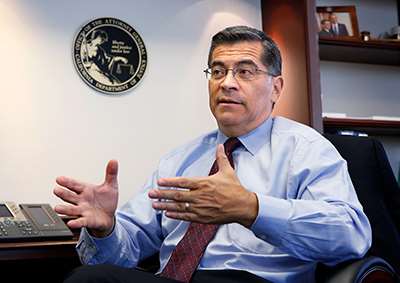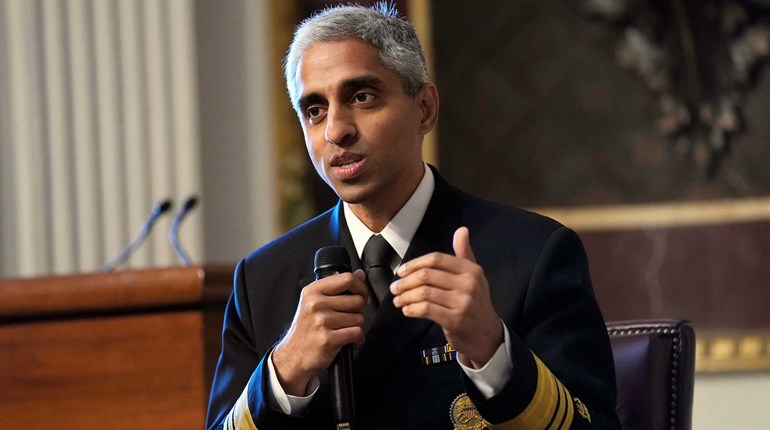
Clearly, the attorney general of California didn’t expect researchers to actually check his historical sources. If he had, common sense tells us he would have been more careful. But then, gun-control advocates have long been willing to just make up history—much of academia and the media, after all, won’t mind and, in fact, will likely applaud them for it.
If you have been following the gun-rights battles for some time, you likely remember Michael Bellesiles’ rewriting of American history in his 2000 book Arming America. Incredibly, his version of early America had almost no guns in it until the Mexican War, almost no hunting, many restrictive gun-control laws and, generally, in his revisionist history, the people had a deep distaste for guns. If you remember Bellesiles, you might also recall that I played a part in discrediting him. (Last I heard, Bellesiles was tending bar, not teaching his peculiar form of “history” at Emory University.)
California Attorney General Xavier Becerra’s mischaracterization of history is nearly as egregious as Bellesiles’.
A lawsuit over a ban on open carry of firearms in California brought this about. Until 1967, open carry of loaded firearms was lawful throughout California. Starting in 1967, open carry remained legal in cities if the gun was unloaded. Outside of most cities, open carry remained legal. Recently, the California legislature required people to get a license to open carry everywhere in the state. In Baird v. Becerra (filed in October 2019), gun-rights activists challenged this new California law.
I keep track of such cases because I have been a California refugee, now located in Idaho, for 20 years. Lawyers working on Baird v. Becerra hired me as an expert witness to read the California attorney general’s brief defending the law. That brief claimed that open carry has not traditionally been legal in America, so I looked at their “evidence” for this. I found a collection of distortions.
Denying Open Carry Was Lawful
California’s lawyers defended this new law in a brief that claimed open carry was never generally legal in America. They listed dozens of laws, starting with Britain’s 1328 Statute of Northampton, and state laws up to the Civil War that they claimed showed that open carry was unlawful. They also cited a dozen or more state Supreme Court decisions holding that open carry was unlawful.
So I did what I had done with Bellesiles’ “scholarship.” I looked up their sources. The dozen or so state laws from the antebellum period they claimed banned open carry turned out to be, in most cases, not even slightly on-topic.
Their brief referred to what are called “session laws,” the laws passed at each meeting of the state legislature—date, state, page number, chapter and after the “§,” the section number of the law. Here is an example of their citations: “e.g., 1786 Va. Acts 33, ch. 21; 1795 Mass. Law 436, ch. 2; 1801 Tenn. Laws 259, 260-261, ch. 22, § 6; 1821 Me. Laws 285, ch. 76, § 1.”
Nearly all of these collections of session laws were available online, so it was easy to check them. The law “1786 Va. Acts 33, ch. 21;” was actually “An act for giving further time to officers, soldiers, sailors and marines, to settle their arrears of pay and depreciation, with the auditor of public accounts.”
The “1795 Mass. Law 436, ch. 2” is worse. Page 436 begins in the middle of chapter 68, “An Act to Enable Sheriffs, Deputy Sheriffs & Constables, to Require Aid in the Execution of Their Respective Offices in Criminal Cases,” and starts chapter 69 with: “An Act for Recording Births and Deaths by the Clerks of Towns & Districts.”
The “1821 Me. Laws 285, ch. 76, § 1.” is actually “Resolve appointing a Committee to examine certain accounts, and to report the same to the Governor and Council. March 22, 1821.” And there were many other examples where the cited laws had nothing to do with guns at all.
There was just one match to their list of antebellum laws forbidding open carry: “1801 Tenn. Laws 259, 260-261, ch. 22.” This is indeed “An Act for the restraint of idle and disorderly persons.” This was a vagrancy law for “persons of ill fame or suspicious character,” which includes the text of the Statute of Northampton (1328), an ancient law that forbid the wearing of armor to “the terror of the people.” Armored knights scared peasants and judges, because it suggested combat might occur at any moment.

How long Tennessee’s 1801 law stayed on the books is an interesting question. Simpson v. State (Tenn. 1833) was a Tennessee Supreme Court decision. Simpson was a drunken man who was armed while threatening others. The court concluded that Simpson had broken no law, and there was no mention by either prosecutor or defense attorney of that 1801 law.
Becerra, however, didn’t simply make up his citations. The same session laws actually refer to different laws—likely both passed in early America during different sessions of a legislature that occurred in the same year. Instead, what he did was play semantics with words and phrases used at the time and he, it seems to me, intentionally hides the true purpose of law he cites by conflating the various session laws.
“Peace Bond” Laws
Another set of laws California’s lawyers cited by Becerra included a Massachusetts law that prohibited going “armed with a dirk, dagger, sword, pistol or other offensive and dangerous weapon,” absent “reasonable cause to fear an assault, or other injury, or violence to ... person, or to ... family or property,” on pain of being arrested and required to obtain “sureties for keeping the peace.” What was left out in their quotation? What was missing was that “any person having reasonable cause to fear an injury, or breach of the peace” could request a judge to order a “peace bond.” This law was written to be used on specific individuals who were given due process; it wasn’t, as Becerra maintains, a sweeping prohibition on the carrying of arms.
Actually, this was sort of like a restraining order is today. You had to persuade a judge that you had “reasonable cause to fear an injury” from a particular person carrying a weapon. This was not a general ban on carrying a gun—it was just for persons who a judge considered a danger to others. The California attorney general’s brief listed seven other states with similar laws.
Three of the other state laws they cited were like this Massachusetts’ law, and all were nearly identical. As with their other citations, the other laws they listed had nothing to do with guns or “peace bonds.”
The actual Maine statute they claimed was like the others had this title: “Resolve in relation to the Military road.” Pennsylvania’s read: “A supplement to the several acts of the Assembly relative to the Pennsylvania State Lunatic Asylum.”
It gets even worse when they start citing state Supreme Court decisions; for example, they quote: “But the historical evidence shows that in America, as in England, a gun was considered an ‘unusual weapon,’” citing State v. Huntly, 25 N.C. 418, 422 (1843). That decision actually says on that page: “a double-barrelled gun, or any other gun, cannot in this country come under the description of ‘unusual weapons,’ for there is scarcely a man in the community who does not own and occasionally use a gun of some sort.”
The defendant, Huntly, was in court because he had made death threats while armed. The Huntly decision ends with: “For any lawful purpose—either of business or amusement—the citizen is at perfect liberty to carry his gun. It is the wicked purpose—and the mischievous result—which essentially constitute the crime.”
California’s lawyers also tried to attribute the carrying of guns in the South to racism and slavery. But gun control has been a mechanism used to keep minorities from becoming fully free members of society.
Carrying weapons in “full open view” was not unusual according to the Smith decision; “carrying a weapon in full open view, and partially covered by the pocket or clothes” was what was “extremely unusual.”
Among the methods used, gun-controllers have put up lists of these distortions of laws at seemingly reputable university websites.
Deceptions About Racism
California’s lawyers also tried to attribute the carrying of guns in the South to racism and slavery. But, as the work of many historians (including by Robert Cottrol and myself) has demonstrated, gun control has been a mechanism used to keep minorities from becoming fully free members of society from colonial times through the civil-rights movement.
California’s history of gun control is awash in racist assumptions. Even California’s current concealed-weapon license law was passed as part of a package of laws, that, in the words of the man who persuaded Gov. Friend William Richardson to sign it, was for “checking tong [gang] wars among the Chinese and vendettas among our people who are of Latin descent.” At the next election, in 1923, Richardson was endorsed by—and refused to answer if he was a member of—the Ku Klux Klan.
When California wrote its first state constitution in 1850, there was some discussion of whether it should include a right to keep and bear arms, as most state constitutions of that era did. A member of the convention named McCarver argued against it. Another delegate named Sherwood argued that denying an individual the right to bear arms “would be null and void, inasmuch as it would be in opposition to the Constitution of the United States,” and then quoted the Second Amendment. Sherwood thought an arms guarantee in the California Constitution was unnecessary because the Second Amendment already protected such a right.
Today, McCarver is remembered for another proposal he later made: that blacks would be forever banned from living in California. This was not just a ban on slaves, but free blacks as well.
When California revised its constitution in 1878, the subject came up again. Delegate O’Donnell requested this constitutional provision: “No alien who cannot become a citizen of the United States shall be allowed to bear arms.” Why? Until 1952, no person of East Asian ancestry could become a naturalized citizen. Why add such a provision banning bearing arms by one segment of society if there was no right to bear arms?
In 2009, the California Assembly apologized for these laws. Assembly Concurrent Resolution No. 42, July 17, 2009 read in part: “Among other things, these laws denied the Chinese in California the right to own land or property, the right to vote and the right to marry a white person, denied children of Chinese descent access to public schools, denied Chinese immigrants the right to bear arms.”
As I have said previously, the California attorney general’s brief is a falsification of history.
The American Bar Association has Rules of Professional Conduct. Rule 4.1 says, “In the course of representing a client a lawyer shall not knowingly: (a) make a false statement of material fact or law to a third person.” I am pretty sure that if a pro-Second Amendment lawyer made this many false statements and out-of-context quotes there would be professional discipline. But, it seems, the rules do not apply to the other side.
If you want to read my entire expert witness declaration that corrects these false and deceptive claims with copies of all the documents, visit: claytoncramer.com/Declaration.pdf.
Clayton E. Cramer teaches history at the College of Western Idaho. His hobbies include machining, astronomy and disturbing the California state government. His ninth book is Lock, Stock, and Barrel: The Origins of American Gun Culture.


































